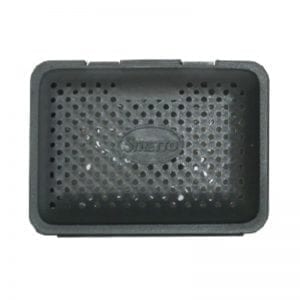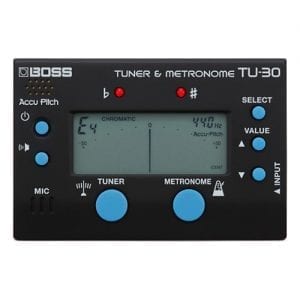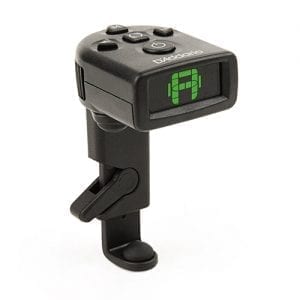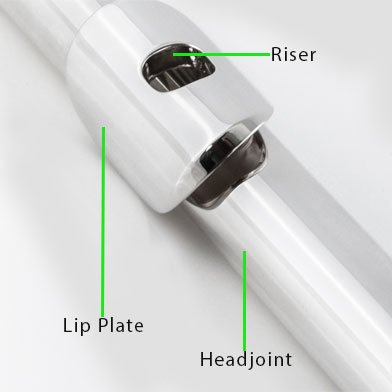- Advice on choosing a violin, viola or cello
- Hire violins in our online store
- Contact us
Introduction
Violins, violas and cellos are delicate musical instruments, and it is important that they are properly maintained for them to last. Here we suggest some simple good habits which will help you keep your instrument in a healthy condition, and some things to keep an eye on.
A well-made and properly looked after instrument should last a lifetime - there are violins dating back to the master luthiers of the early 1500's that are still in use today!
Cleaning

At the end of every playing session, the instrument should be wiped down with a clean, dry cloth - this will help to prevent the build-up of rosin, dirt, dust and sweat, which if left over time can damage the varnish as well as the strings.
For more serious cleaning, it's generally best to take your instrument to an experienced specialist who can advise on the best course of action. Avoid using commercial, general purpose cleaners or polishes as these usually contain solvents, abrasives or waxes which can damage the instrument's finish and dampen its sound.
Need to hire a violin or cello? Hire today in our online store
Specialist polishes and cleaners are available, but these should still be used sparingly as overuse can erode the finish, especially on older instruments - if in any doubt, consult a professional repairer before doing anything that might potentially damage your instrument.
Humidity & Temperature
It is important to protect any wooden instrument from extremes of humidity and temperature, as the resulting expansion and contraction of the wood can cause cracking and warping. Generally, more extreme damage can be avoided by following common sense rules:
- When not in use, keep the instrument in its case
- Don't leave it in direct sunlight, or in a sun-baked car
- Don't leave it too close to a radiator
- Avoid storing in excessively damp environments, eg a room where there are clothes drying
- Avoid sudden changes of temperature
If sudden changes in temperature are unavoidable, for example when taking the instrument into a heated building on a cold day, it is good practice to leave it in its case for a few minutes. By the time you have got used to the change in temperature, your instrument generally will have as well, and it will be safe to get it out of the case.
Because the relative humidity tends to be lower in the winter, when central heating tends to dry out the air inside buildings, and higher in the summer, the changing of the seasons can also cause more gradual cracking and warping of the instrument. This can largely be avoided by using a humidifier such as the Dampit, which fits in the instrument's case and enables you maintain the humidity at its ideal level (between 45-55%).
If you are planning to play outdoor concerts in the summer sunshine or take your instrument abroad anywhere with a drier climate, then one of these humidifiers is a must.
Tuning
Orchestral stringed instruments should always be tuned to concert pitch. Tuning them any higher will place extra tension on the strings making them more likely to break, and risking damage to the instrument itself. Tuning them lower than concert pitch will make the instrument sound duller and quieter than it should be.
In the early stages of learning, it may be best to let your teacher do the tuning, but if you are going to tune the instrument yourself you will need either an electronic tuner, pitch pipes, a tuning fork or a keyboard to tune to.
By far the easiest option to use is an electronic tuner. Modern electronic tuners such as the chromatic Korg CA-30 are inexpensive and very accurate, you simply pluck the string and the tuner tells you which note you are closest to, and whether you are flat or sharp, and you adjust the tuning accordingly.
Need to hire a violin? Hire today in our online store
If in doubt, ask your teacher!
The Top Four Violin Tuners
Strings
There are many different makes of strings for violin family instruments. Although nearly all of them look like they are made from metal, this is only a thin layer on the outside that is visible* - the core of the string will normally be made from either metal, gut or a synthetic material.
Strings with a metal core are the cheapest option, and they tend to be the loudest and brightest sounding. Whereas some better-quality metal strings can increase the volume of smaller size instruments (eg Pirastro Piranito strings, which we fit on most of our rental instruments up to 3/4 size), the cheaper metal core strings are best avoided as they sound like a cats' chorus when they are newly fitted, and rapidly get worse...
Gut was material traditionally used for all instrument strings, and many professional players still use modern gut-core strings (eg Pirastro Eudoxa) to replicate that authentic sound. There is, however, a downside to this - gut strings require regular treatment with string oil to prevent them being damaged by skin acids, they are the most sensitive to changes in humidity and temperature (hence prone to going out of tune), and the most prone to breaking.
For these reasons most students and a growing number of professional players use strings with a synthetic core, which tend not to suffer so badly from tuning and breakage problems, and do not require oiling. Popular brands include Thomastik Dominant (which we fit on most of our full size rental instruments), Pirastro Obligato, Jargar and Larsen, all of which have slightly different tonal characteristics and 'feel'. Expect to pay a bit more than for metal strings, but the improvement in tone is well worth it.
Changing the type of strings on your instrument can affect the way it is set up, as the tension of the strings may vary.
N.B. when restringing a violin, it can be quite dangerous to wind too much string on the pegs, as sometimes the excess string gets wedged underneath the peg against the floor of the peg box and causes cracks in the back of the peg box.
*except violin E strings, which are usually made from plain steel
The Set-Up
With string family instruments, the phrase 'set-up' describes several different factors including the height and curvature of the bridge, the angle between the strings and the fingerboard, the angle by which the strings bend over the bridge, the height of the saddle and nut and the type of strings, all of which have an effect on how easy the instrument is to play, and the quality and volume of sound it produces.
For example, if the angle between the strings and the fingerboard is too large, the distance between them will be too large and a player will find it harder to press down the strings; if the angle is too shallow the vibrating strings will be too close to the fingerboard and will make an unpleasant buzzing noise.
All the violins, violas and cellos that we hire have been set-up by our own repairer, so that they play and sound at their very best. Regular cleaning (see above) and protection from extremes of temperature and humidity (see below) will help to maintain them at their best, but it is possible that the set-up of your instrument will still need small adjustments from time to time.
If you think that your instrument is not playing like it should, it is best to seek the opinion of an experienced specialist; many problems can be rectified by a small adjustment to the set-up, which could prevent them turning more serious in the future.
The Bridge
The bridge is a vital part of a violin, viola or cello's anatomy as it helps to transmit the vibration of the strings to the body of the instrument where the sound is generated. There are many different aspects to a properly fitted bridge, including its height, curvature, the angle it is placed at and the fit of the feet.
If a bridge breaks, you will need to get a new one fitted by an experienced luthier or repairer; for the bridge to work properly they must be carefully cut to fit the individual instrument and cannot just be bought 'off the shelf'.
Occasionally a violin, viola or cello bridge may move out of position, or fall out altogether. To check if your bridge is in the right place, the f-shaped sound holes on the belly of the instrument each have two small notches cut into them - when correctly positioned, the notches that point towards the bridge should line up with the middle of the bridge's feet, and the flat side of the bridge nearest to the tailpiece should form a right angle with the belly of the violin.
If the bridge is incorrectly placed, your teacher or a repairer may should be able to re position it. Remember, it is always best to consult an experienced professional before doing anything that might damage your instrument!
Inspecting for Cracks
It is good practice from time to time to inspect your instrument for cracks. Cracks can appear for different reasons, such as prolonged exposure to a dry environment, accident damage, or a sound post that has been incorrectly fitted, but in every case, cracks should be shown to an experienced repairer as soon as possible. The sooner a crack is repaired, the easier the repair is, and the more likely it is to be invisible after the work has been done.
Places where cracks appear most often are around the ends of the f-holes, at the ends of the sound post (the cylindrical piece of wood inside the body), around the bass-bar (the wooden strut attached to the underside of the belly), around the ribs (sides) and at the point where the peg box joins on to the neck. It is important not to touch a crack if you find one, as grease and sweat from your fingers can stop the repairer's glue from working properly.
The good news is that once a crack has been properly repaired, and reinforced if necessary, it should not have an adverse effect on the instrument's sound.
The Pegs
Tuning pegs need to be able to turn smoothly when the instrument is being tuned and hold fast at other times. To an extent it is possible to increase the grip between the pegs and peg box by applying a very small amount of ground up rosin, or if they are too tight they can be lubricated with a very small amount of ground up soap. To avoid the risk of damaging your instrument, this process is best left to an experienced repairer.
On older instruments where the pegs and holes have worn away, or instruments that have been badly set-up or poorly cared for, the problem may be more serious, and the solution may involve re-reaming the holes, replacing the pegs, or both.
The Fingerboard
The fingerboard of the string family instruments is traditionally made from ebony and is of crucial importance to the structural strength of the instrument. If at any time you notice the fingerboard come loose or fall off altogether, you should immediately slacken off the strings and take the instrument to a repairer - without a fingerboard, the tension of the strings will rapidly warp the softer maple that makes up the rest of the instrument's neck, making it very difficult to repair.
The Sound Post
The sound post is a cylindrical piece of wood inside the violin, viola or cello body that joins the belly to the underside of the instrument and is located below one foot of the bridge. As well as transmitting sound between the two surfaces of the instrument's body (hence its name), it is also vital to the structural strength as it counteracts the downward force of the strings and bridge on the belly.
If the sound post comes loose at any point (in which case you will probably hear it rattling around inside the instrument), slacken off the strings immediately and take the instrument to a repairer. It is much easier to replace the sound post in the first instance than repair an instrument that has already begun to collapse!













